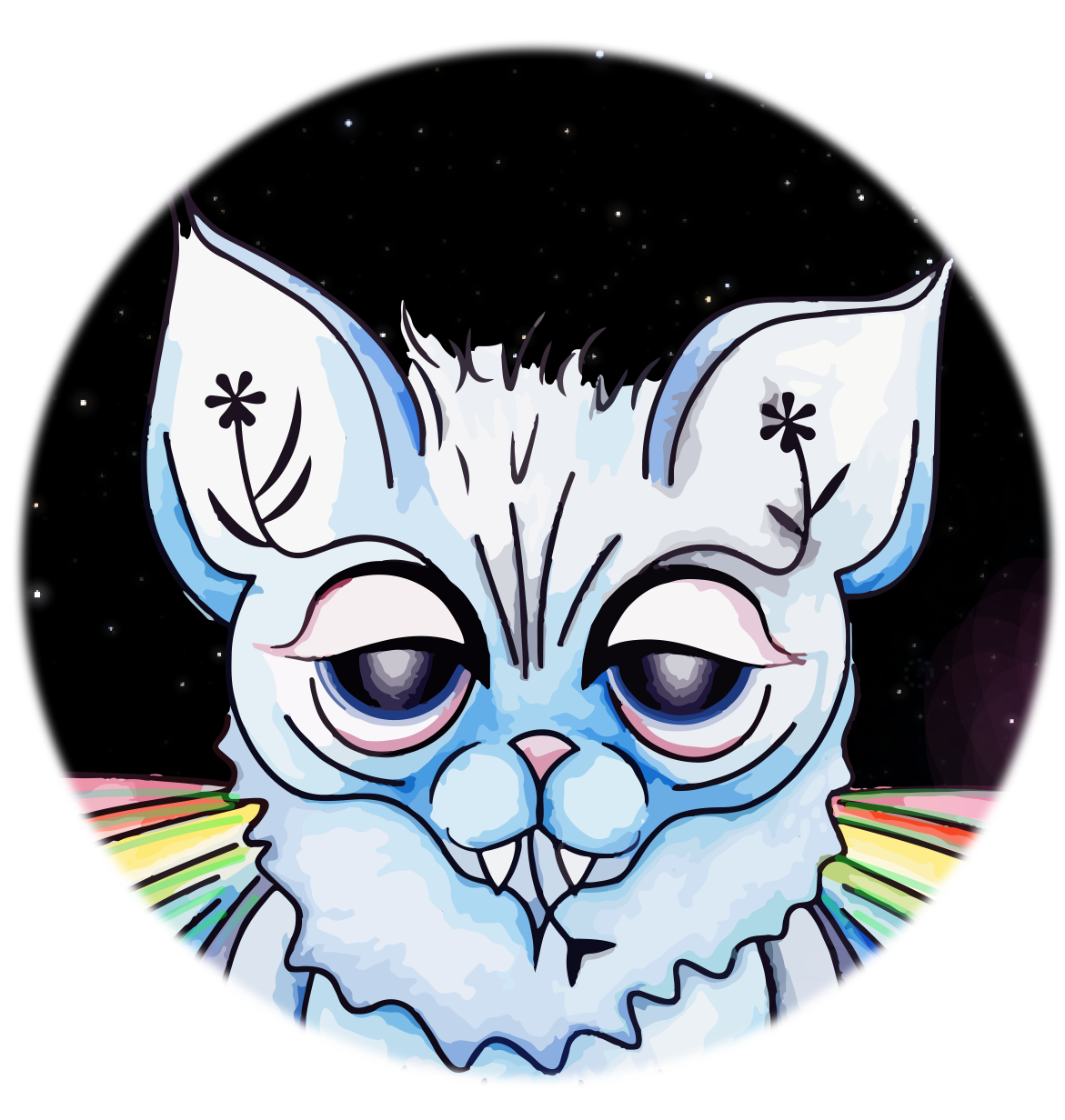Another fascinating lecture which has left me feeling rather overwhelmed and not quite knowing…what? I’m slightly freaked out by the brain scan film at the end, even though it was visually interesting, and wouldn’t have been out of place projected in a nightclub particularly with the music, also vaguely reminiscent of tubular bells, when the instruments are being introduced. I diverge.
The gaping lions mouth seen in the brain cut in half was interesting. I find if I think too hard about how brains work my own mind brings the shutters down, as happened when the multiplication popped up on screen. I hit a kind of wall and struggle to process, perhaps it’s the mechanics of how we function as beings flummoxes me. This takes me back to last weeks task and the words, my word insignificant in particular, the brain doesn’t look insignificant at all but a highly complex thing, and there are 8 million human brains on the planet.
I am finding the psychology interesting, and wonder if as designers it is asking us to play to the right side of the brain rather than the left? Looking at my notes, and the words used here are similar to words found in previous lectures/resources; Individual, Changing, Evolving, Interconnected, Implicit, Living beings.
I found the history of how people have tried to formulise the design process interesting, and can understand why the Linea model is no longer used. I particularly liked the six hats method. Until today I was unaware that these was a specific ‘formular’ followed for design.
For my own investigation it, as usual, took a few days for me to process the question. I was initially really flummoxed with what to do, but on closer looking at the question realised I could look at a philosophy, rather than join a design model with a thought process. Initially I thought of my Tai Chi practice, taught to me over 12 years by the very best Tai Chi Master on the Island, Laurence Bridgeland (NaturalTherapyForAll ). Tai Chi exercises not only the body, but if practiced correctly it also exercises the mind, it is a continuous learning journey, the more it is practiced the deeper you can go with it. I am still wanting to finish the beautiful Cheng Man Ch’ing form we were half way through learning.
He unfortunately stopped teaching when Covid hit, and still hasn’t started up again, even after many emails and calls and gentle badgering. We didn’t just learn the movements, but learnt about some of the thinking and the background behind the movements. On closer investigation I found that the meanings of the Tai Chi originated from the from the philosophy of Taoism. I have looked at the history and modern practice and feel it is a philosophy that I have been following, without really realising. I will base my line drawing on my findings.
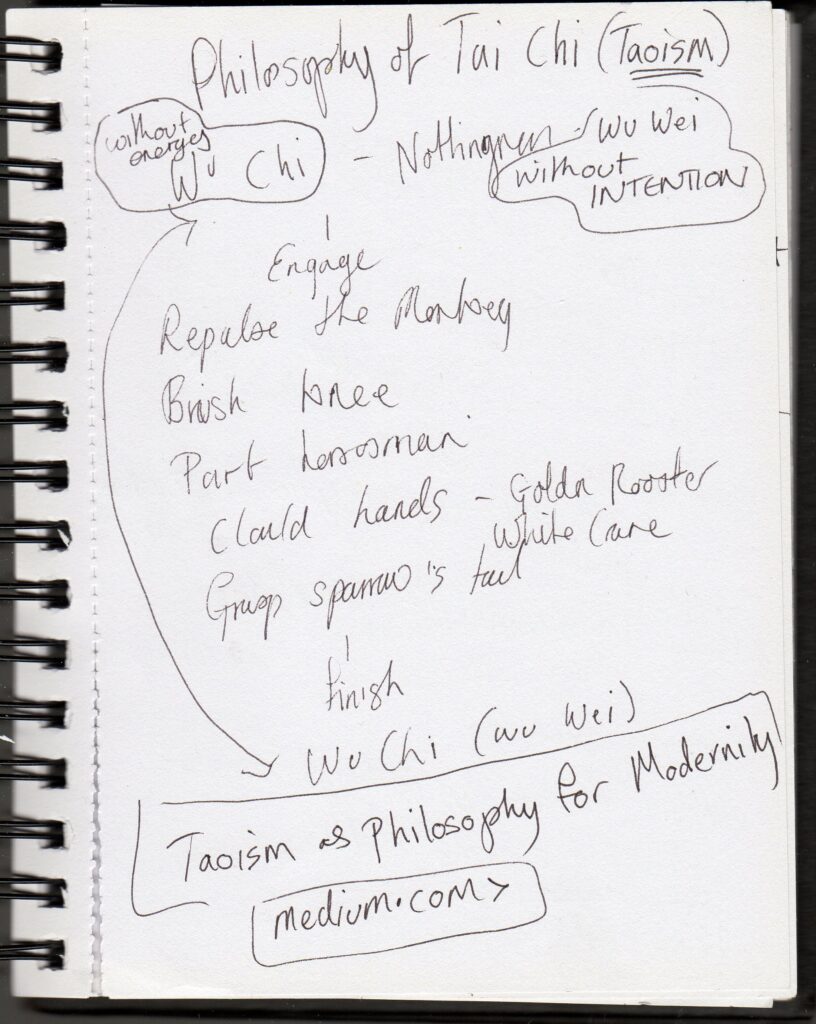
Chinese Calligraphy style line drawing? Is it authentic to me?
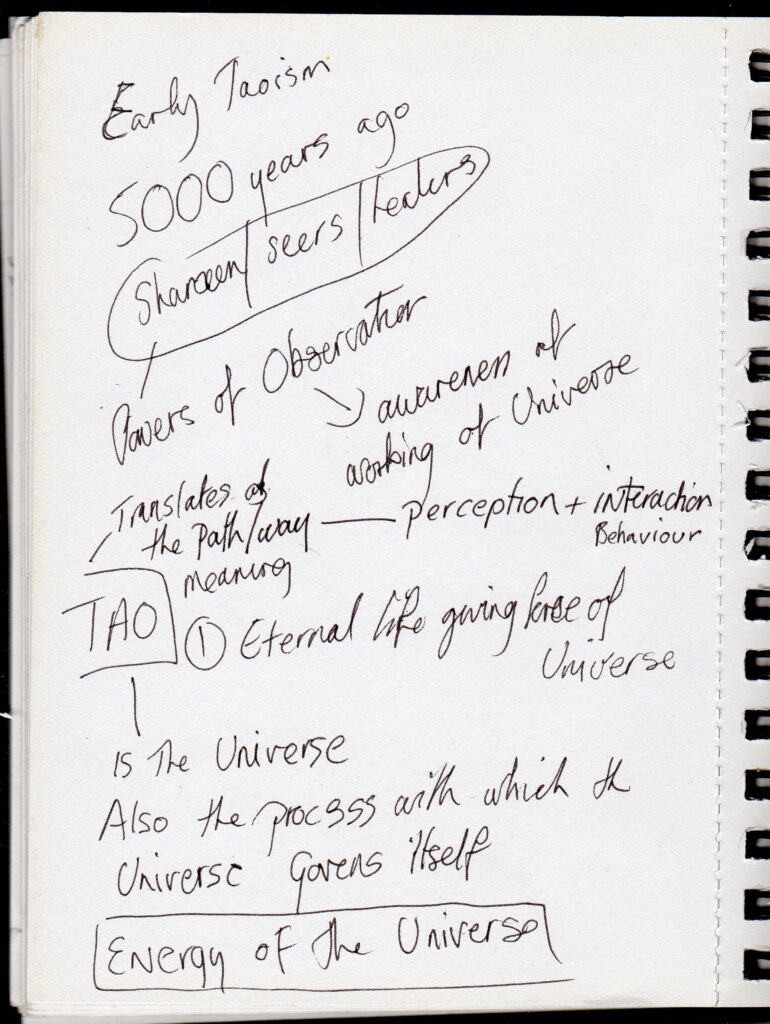
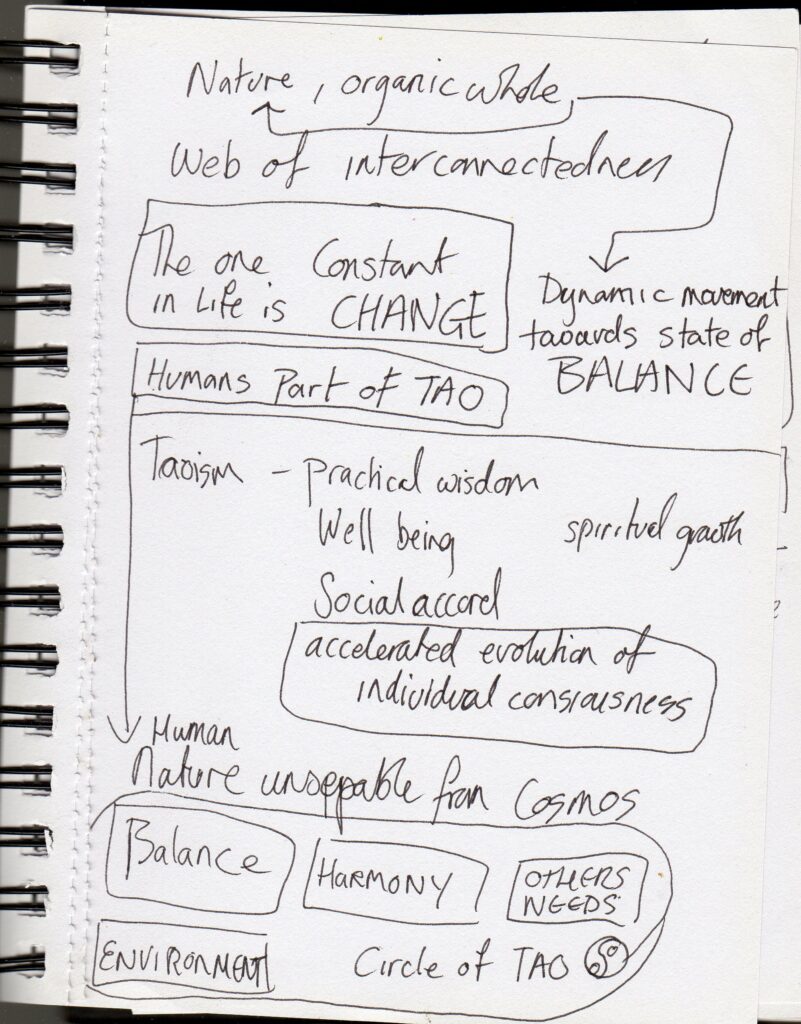
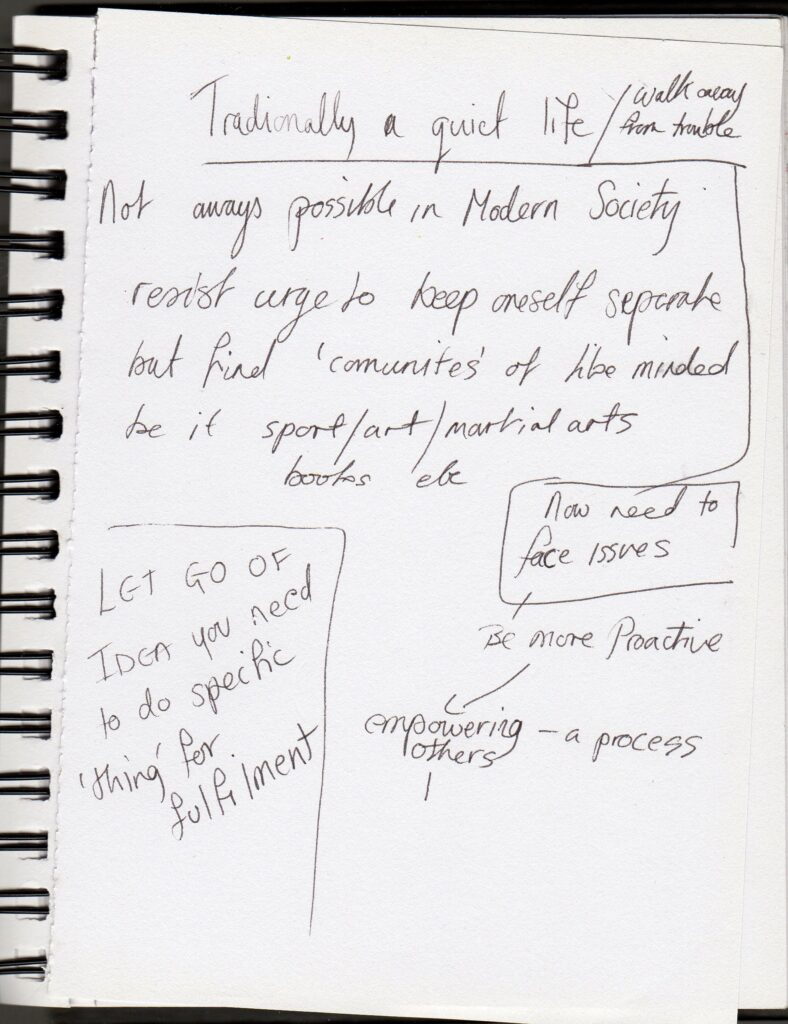
Taoism – World History Encyclopedia
Taoism – an overview | ScienceDirect Topics
Taoism – World History Encyclopedia
Taoism (nationalgeographic.org)
Taoism – Ancient Wisdom for a Modern World: The Tao of Daily Living – Pacific College
Taoism Today: An Ancient Practice for A Modern World – NowWithPurpose
‘Conventional knowledge is based on making distinctions and determinations, on gathering information. It is the realm of our rationality. However, this level of mind simply cannot encompass the vastness of life. Rationality is limited in the way it perceives. Our intuitive understanding, on the other hand, is connected to universal wisdom, to the Tao, and speaks our deepest truths. This understanding is experiential rather than intellectual. We become that understanding.’
Real Experience At presence
The path of least resistance takes you further: not everything good has to be hard, and not everything simple needs complicating
“Taoism is based on the idea that behind all material things and all the change in the world lies one fundamental, universal principle: the way of Tao, which is the interplay between five elements (i.e. metal, wood, water, fire and earth), and the interdependence between the macrocosm and the microcosm (e.g. man’s relation to the universe). This principle gives rise to all existence and governs everything – all change and all life. The purpose of human beings is then to live life according to the Tao, which requires passivity, calmness and non-strife, known by Taoists as ‘Wu Wei’”
After a day of fiddling about, and really not being happy with what I’m doing, my drawing has been too Tai Chi and figurative, and not really what I want to convey. I took my daughter to rugby practice, and sat in the fresh air with my sketch book and really thought about what I wanted to say.

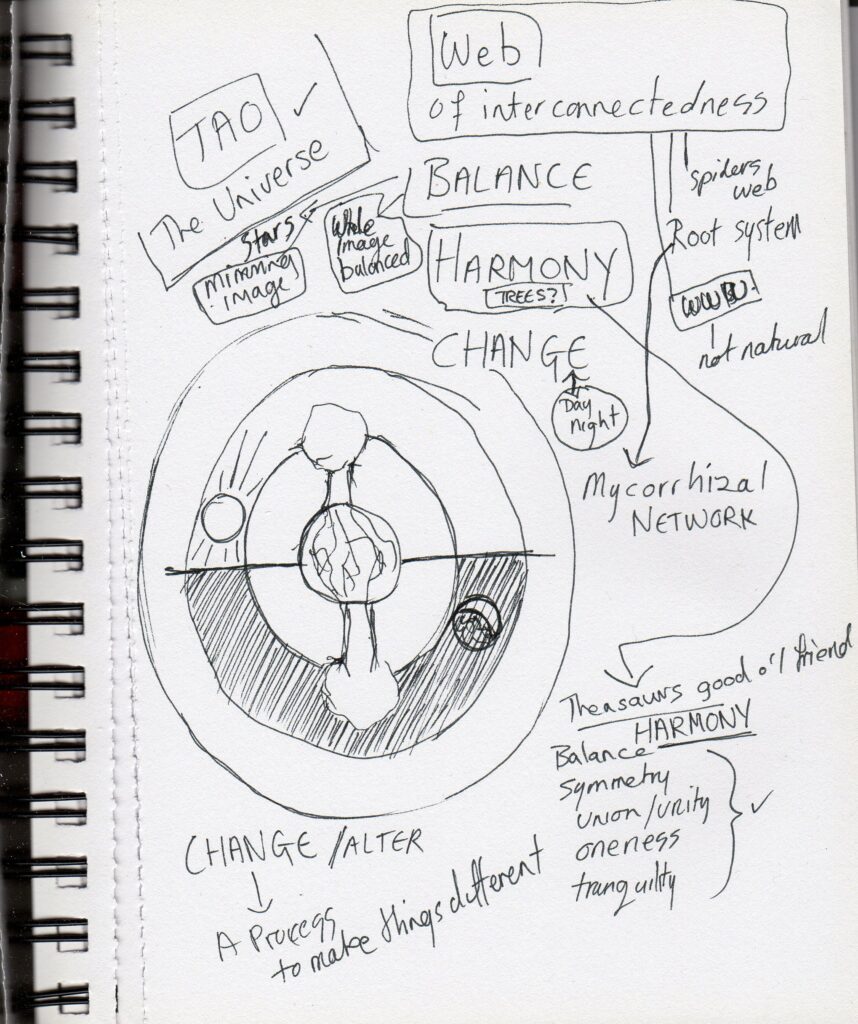
I am far happier with the more abstracted sketch above, and will use these ideas for the basis of my line drawing.
8 Important Taoist Visual Symbols (learnreligions.com)
Taoism is seen as some as a religion, but also as a philosophy, which is the way I see it. There are lots of symbolic images related to Taoism, which I have tried to steer clear of, so that the line drawing is my own interpretation, however I found the above website after sketching out my rough, and there are some cross overs.
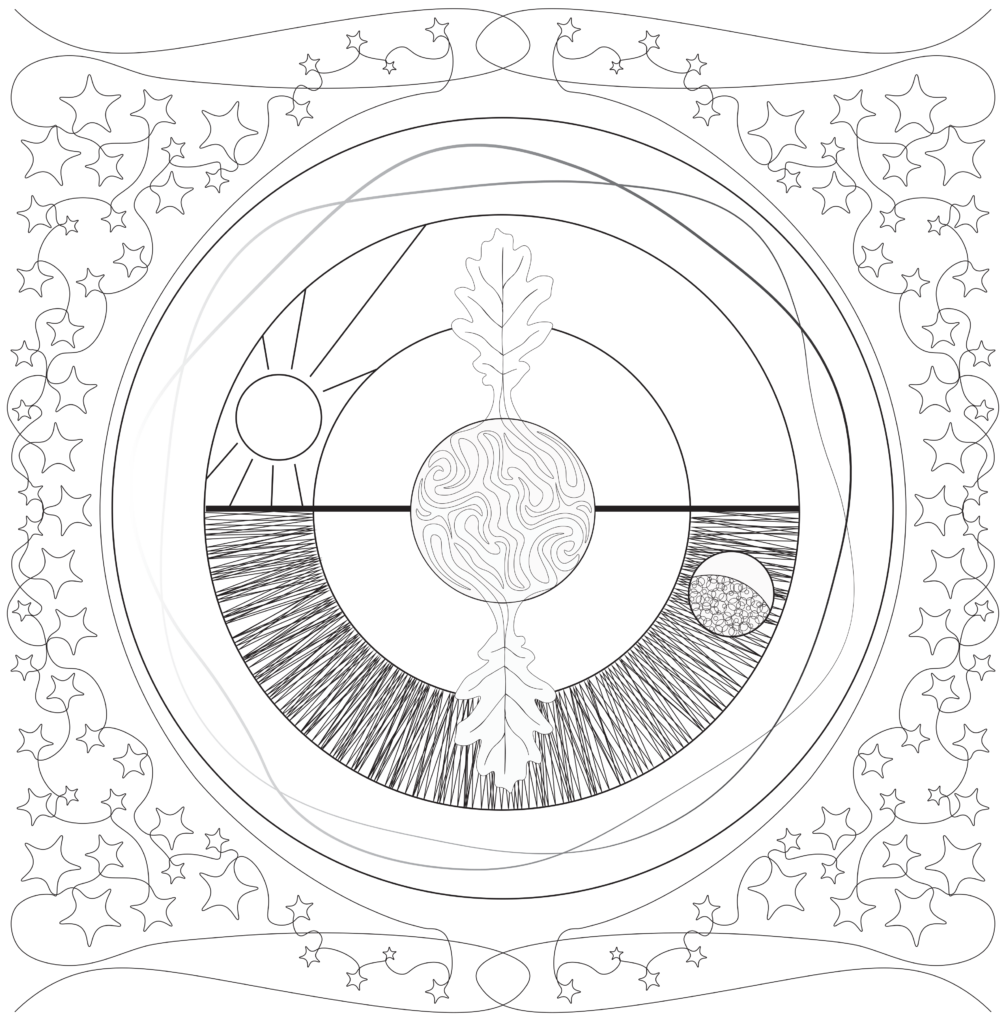
I decided to go digital and use illustrator for my line drawing which I think possibly looses something, and ends up looking a bit too neat. I initially wanted to used one continuous path, to further the idea of interconnectedness within my drawing and the theory behind Taoism. However the drawing has so many little bits and pieces going on that my head got in a bit of a funk with that, and even just joining the stars left great chunks of path un-joined. After ditching the continuous path idea I was able to use different thickness of path and layers which made the whole thing a lot easier to manage, and I think added slight depth to the overall design.
It wouldn’t look out of place in a new age hippy tattoo parlour type thing, which wasn’t my intention, but I think with the amount of symbolism already wrapped up in my chosen area I found it a little hard to avoid.
I wish my final piece could have been more dynamic and interesting. I think I felt quite restrained by this project for some reason, possibly overwhelm with the initial lecture/resources? I was really struggling even with the initial brief, what to choose, a bit rabbit in headlights? I chose ‘the path of least resistance’ for my mind to cope with.
If I had another week to work on it I think I might start over and try to choose something different. I guess what I’ve produced does convey Taoism, perhaps it is still too ‘textile’ print which I seem to end up doing by default, I hope that with next weeks challenge I can start to move on from that. But perhaps I am being too critical, and need to find more of a balance?
Doodles notes and stuff to help me remember
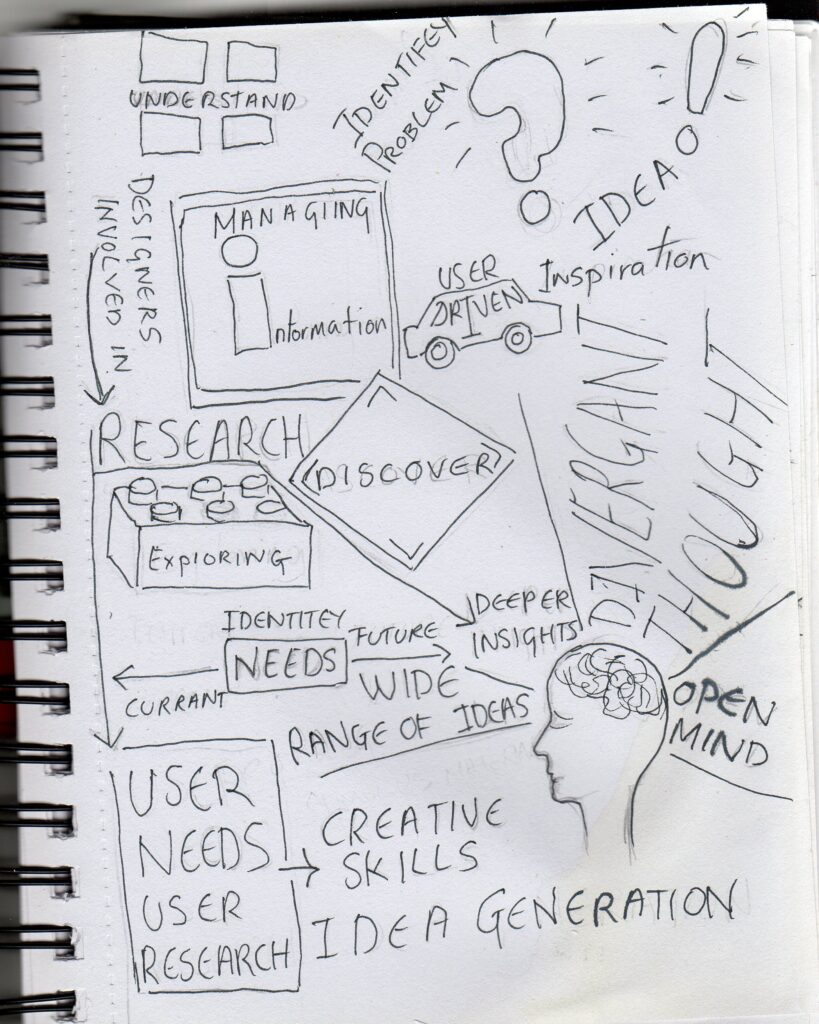
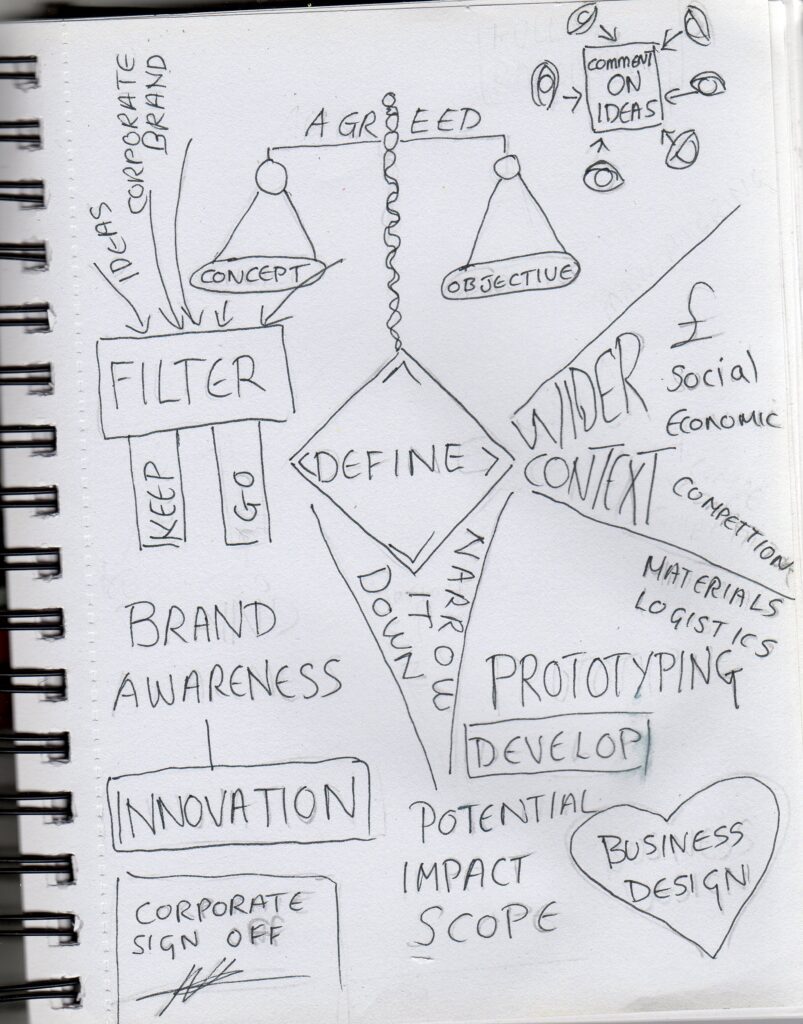
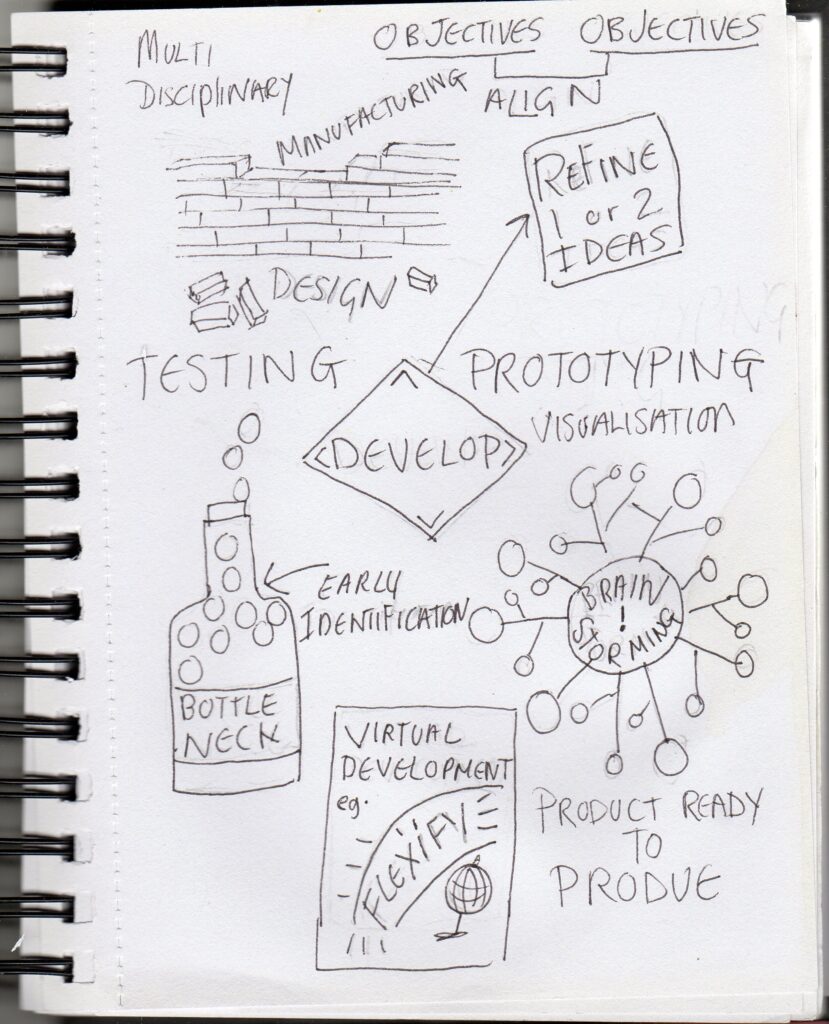
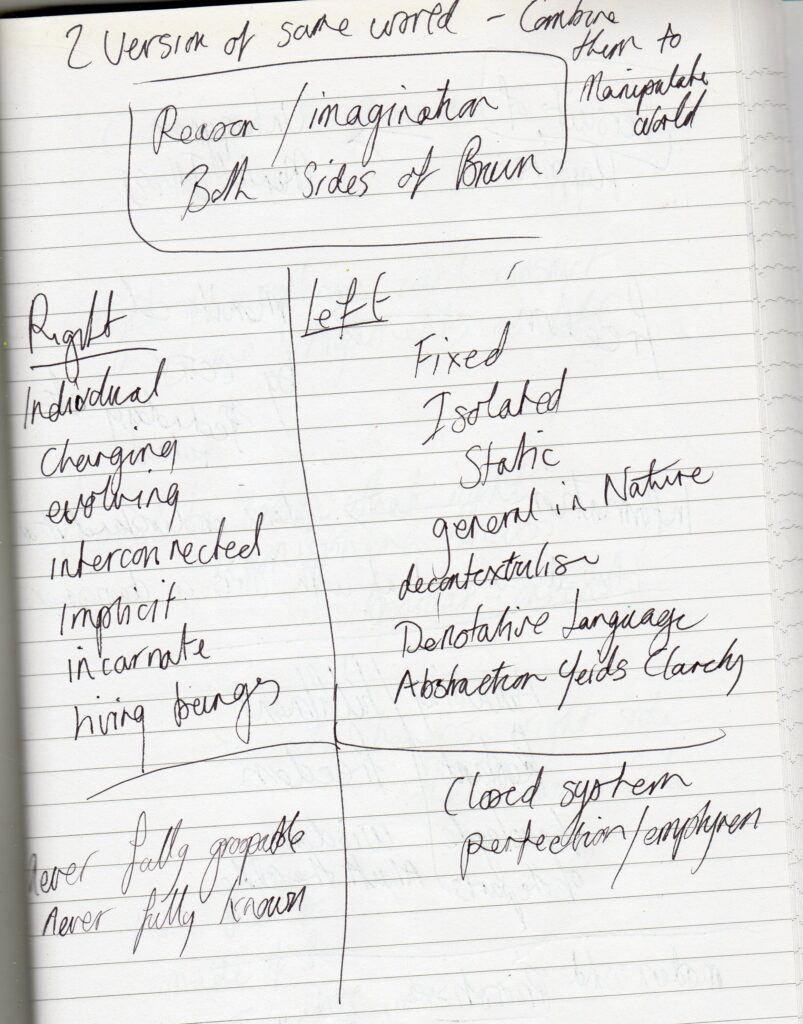
06/07/23
After a considerable amount of time since the brief was set, and therefore a considerable amount of time to process the question, I have realised that if I were to be able to do this task again I would choose Chaos Theory. I think it was after discussion about preparing a grid for our PDF, the structure and rigidness and pre-planning of this seems slightly alien to me. Then after a sleep, Chaos theory popped into my head- possibly a good example of chaos theory working at its randomness?
I also look at the way in which my current employer works, many people he has employed over the years can’t cope with with his highly chaotic, irregular, unpredictable but also incredibly creative way of working. I think I have worked for him for the duration I have because am able to generally cope with it and to some extent, I think I also work in this way.
Chaos theory is concerned with the unpredictable course of events
Chaos theory describes the qualities of the point at which stability moves to instability or order moves to disorder. For example, unlike the behavior of a pendulum, which adheres to a predictable pattern a chaotic system does not settle into a predictable pattern due to its nonlinear processes.
